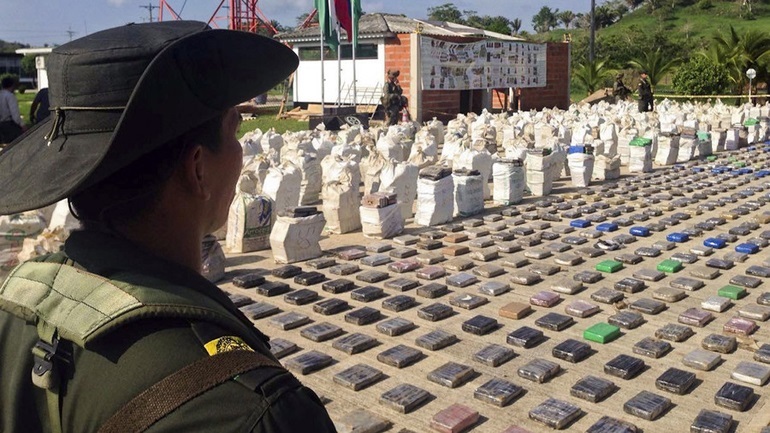The Colombian government announced on Tuesday the seizure of six tonnes of cocaine in a jungle lab complex in the southwestern part of the country, which it said belonged to the National Liberation Army (ELN), officially the last rebel organization to continue the armed struggle in the country.
It was “the biggest blow to ELN drug trafficking this year,” as “six tonnes of cocaine hydrochloride were seized,” Colombian Defense Minister Diego Molano told the media in a video.
The operation christened Jared allowed the destruction of three “large laboratories” by the armed forces in the community of Shamaniego, in the district of Narino, near the border with Ecuador.
“The cocaine, machinery and other items found were worth more than $ 9 million. “The drugs were ready to be packed and transported to the Colombian coast in the Pacific (…) to be sent to Mexico and the United States,” said Attorney General Francisco Barbosa.
Photographs of cocaine production facilities in the jungle have been released.
Molano has already announced that the government will redouble its efforts to crack down on “terrorism” by armed groups following the firing on President Ivan Duque’s helicopter in Kukuta, near the border with Venezuela.
The government accuses the ELN of being responsible for the attack, as well as of driving a car bomb into a camp in the same city on June 15, injuring 36 people.
The ELN denied any involvement in the attack on the camp.
Southwestern Colombia has been experiencing a resurgence of violence for several months. The government blames armed groups financed by the trafficking of illicit drugs and metals, especially gold.
In 2020, the UN estimated that the area of Colombia where coca is grown, the plant whose leaves are the raw material for cocaine production, was 1,440,000 acres. Although this area was reduced (-7%) compared to 2019, cocaine production continued to increase, according to the United Nations Office on Drugs and Crime (ONUDC).
The National Liberation Army, an organization founded by radicalized Catholic priests in 1964, is estimated by Colombia’s military intelligence service to have between 2,300 and 2,600 fighters and an extensive support network in the province and urban centers. The organization’s leadership assures that it is not involved in drug trafficking, says that the government is trying to discredit it with this claim.
Colombia is the country with the highest cocaine production in the world (≈1,010 tonnes per year). The country where most of it is consumed is the USA.



